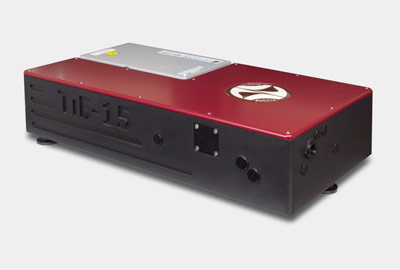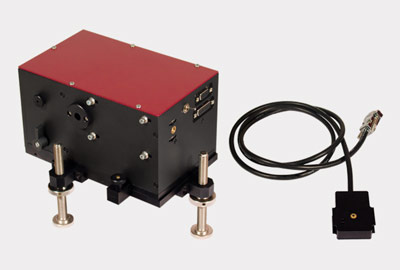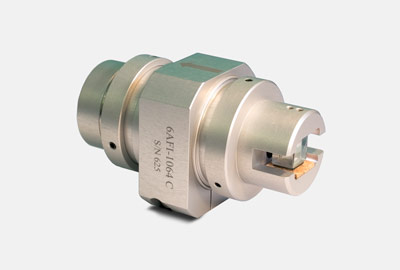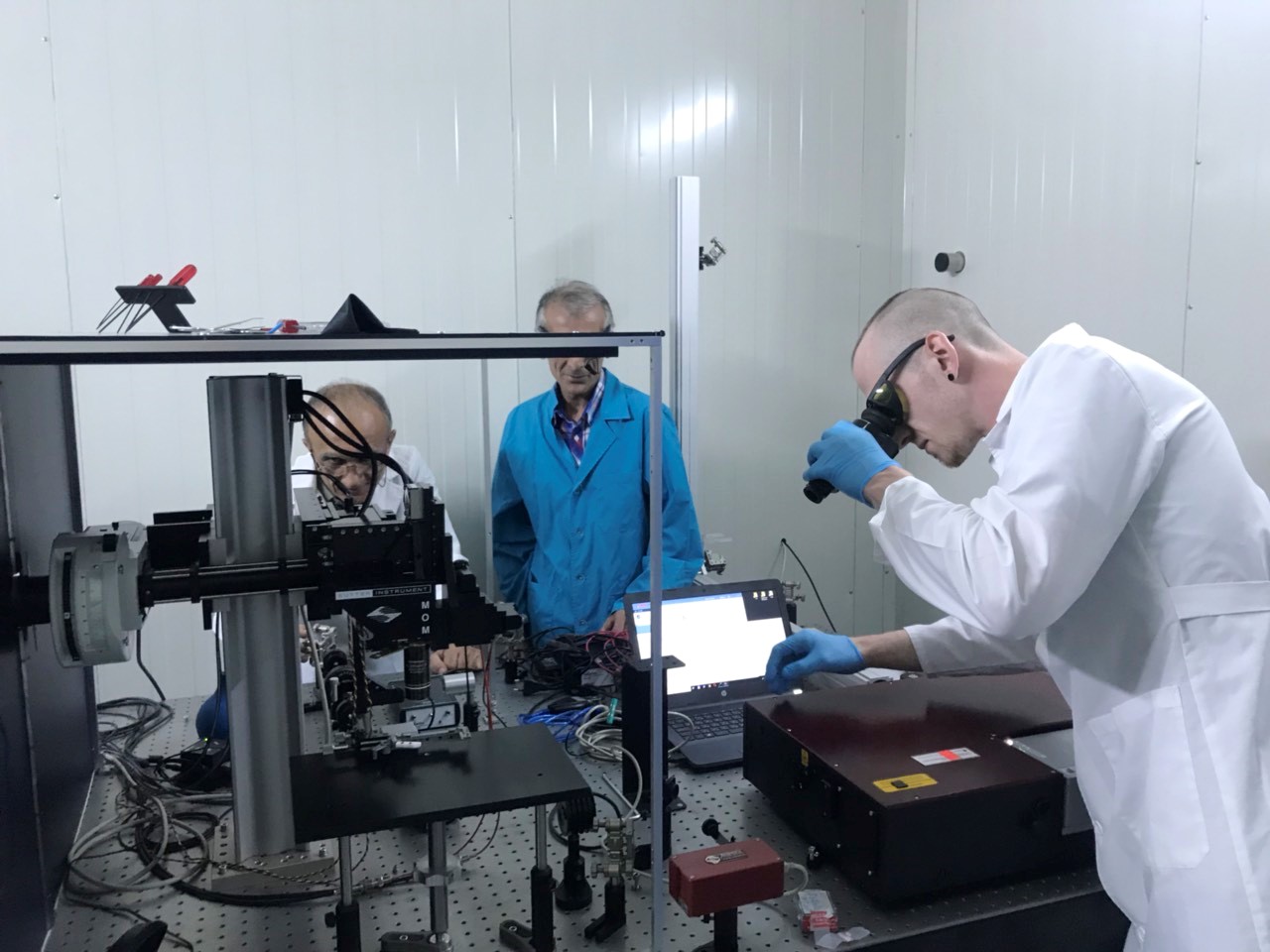APC. Prism-Based Dispersion Control Unit for Femtosecond Lasers
| APC Kit FS | APC Kit DF | APC Pro FS | APC Pro DF | |
| Prism material | fused silica | dense flint | fused silica | dense flint |
| Wavelength | 700-900* nm | |||
| GVD range of dispersion compensator at 800 nm | user-defined, tuning range width 13000 fs2 | user-defined, tuning range width 30000 fs2 | from +6900 fs2 to -1630 fs2 ** | from +16500 fs2 to -13800 fs2 |
| Transmission | >90% @800 nm | |||
| Polarization | linear, horizontal*** | |||
| Beam diameter | up to 4 mm | |||
| Dimensions | two units, 165*180*129 mm each | 410*324*186 mm | ||
| * - other wavelength ranges are available upon request; ** - tuning range can be shifted to (+5700 fs2 to -2830 fs2) upon request; *** - vertical polarization upon request. |
||||
Prism dispersion compensator provides extensive control over the duration of femtosecond optical pulses by introducing user-defined amount of second-order group velocity dispersion (GVD) into the optical scheme. It can compensate the pulse widening caused by positive GVD of transmissive elements of the optical setup such as lenses and objectives that is critically important for multiphoton femtosecond microscopy.
Propagation through any medium (including transparent ones) can influence the temporal properties of ultrashort laser pulses due to difference in the refraction index for different wavelengths, or dispersion. The dispersion makes different parts of a broadband spectrum of femtosecond laser pulses propagate with different velocities and separates them temporally from each other. For example, the second-order dispersion of glass in a microscope objective can stretch a 30-fs transform-limited laser pulse to 150 and even 300 fs. This stretching is unacceptable for scientific purposes since it results in decrease of intensity and temporal resolution. Fortunately, there are several ways to compensate the influence of the material dispersion introduced by transmissive optical elements. The most versatile and simple approach is to use a prism dispersion compensator which introduces the same amount of group velocity dispersion (GVD) but with an opposite sign (i.e. negative GVD) to the optical scheme.
- upon request, both APC Kit and APC Pro models can be equipped with stepper-motor controls of prism insertion depth. The dimensions of such modification of prism dispersion compensator are smaller;
- the APC Pro FS model can be manufactured in two configurations (the default model has GVD range from +6900 fs2 to -1630 fs2, while the optional model has GVD range from +3300 fs2 to -5230 fs2);
- for the APC Kit models we offer an additional multi-pass unit based on two parallel mirrors which can be placed between the two main optical units for simultaneous increase of the prism-to-prism distance and decrease of the overall size of the dispersion compensator.
How can I control the GVD with the APC device? How can I calculate the amount of the GVD introduced by the device and the necessary prism-to-prism distance?
To configure the prism dispersion compensator that would fit your requirements, it is desirable to estimate the amount of positive GVD introduced by the elements of your optical scheme. For example, passing through 1 mm of fused silica adds +36 fs2 of GVD. Microscope objectives can introduce +1000 fs2 or even more [Müller, Squier, Wolleschensky, Simon and Brakenhoff (1998), Dispersion pre-compensation of 15 femtosecond optical pulses for high-numerical-aperture objectives. Journal of Microscopy, 191: 141–150. doi:10.1046/j.1365-2818.1998.00357.x]. So, the dispersion compensator should be able to compensate this amount of dispersion. It is achieved by separating the prisms to some large distance (i.e. introducing large amount of negative GVD) and then inserting the prisms into the beam (i.e. adding the positive GVD) until the total GVD of the dispersion compensator and your optical setup is compensated. It is highly desirable that in the normal operating regime the prisms in your dispersion compensator are not inserted too deep into the optical beam (since the prism material introduces also third- and higher order dispersion).
In our APC Pro model the separation between two prisms is fixed. Maximum and minimum insertion depth of the two prisms is defined by the prism dimensions. We can achieve the following amounts of GVD in our dispersion compensator for various wavelengths:
Prisms from fused silica.
| Wavelength, nm | Minimum amount of GVD of the prism compensator (beams pass close to the prism apices), fs2 * | Maximum amount of GVD of the prism compensator, fs2 * |
| 700 | -1800 | 8780 |
| 750 | -1670 | 7850 |
| 800 | -1630 | 6900 |
| 850 | -1680 | 5950 |
| 900 | -1800 | 4950 |
*Upon uses`s request, we offer a modification of the APC Pro FS compensator, which allows to vary the GVD within the range from -5230 fs2 to 3300 fs2 at 800 nm.
Prisms from dense flint glass.
| Wavelength, nm | Minimum amount of GVD of the prism compensator (beams pass close to the prism apices), fs2 | Maximum amount of GVD of the prism compensator, fs2 |
| 700 | -20520 | 17000 |
| 750 | -16500 | 17050 |
| 800 | -13800 | 16500 |
| 850 | -11890 | 15630 |
| 900 | -10590 | 14540 |
Related products
Latest News
Ti:S oscillator with up to 3 W output power at 100 fs
We have ramped up the maximum available output power for the TiF-100 series to more than 3 Watts at 800 nm, 100 fs, 80 MHz. The tuning range has also been extended to 720-950 nm, while an optional modification that covers 850-1040 nm is also available. The system features a high-power low-noise integrated DPSS laser […]
TiF-100ST-F6 femtosecond Ti:S oscillator with Frep locking for multiphoton microscopy at CANDLE, Armenia
The TiF-100ST-F6 femtosecond Ti:S oscillator with a built-in pump laser, also equipped with the ALock PLL electronics unit for pulse repetition rate locking to an external RF source has been installed at the Synchrotron Research Institute’s CANDLE facility in Armenia. The setup has been developed and commercialized during the joint Russia-Armenia project supported by FASIE (Innovation […]












